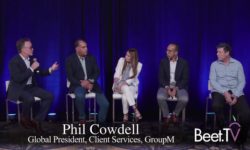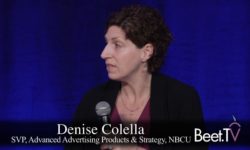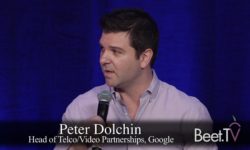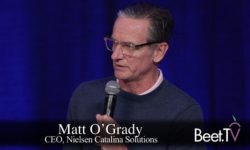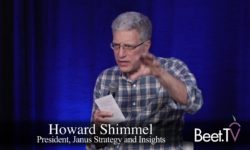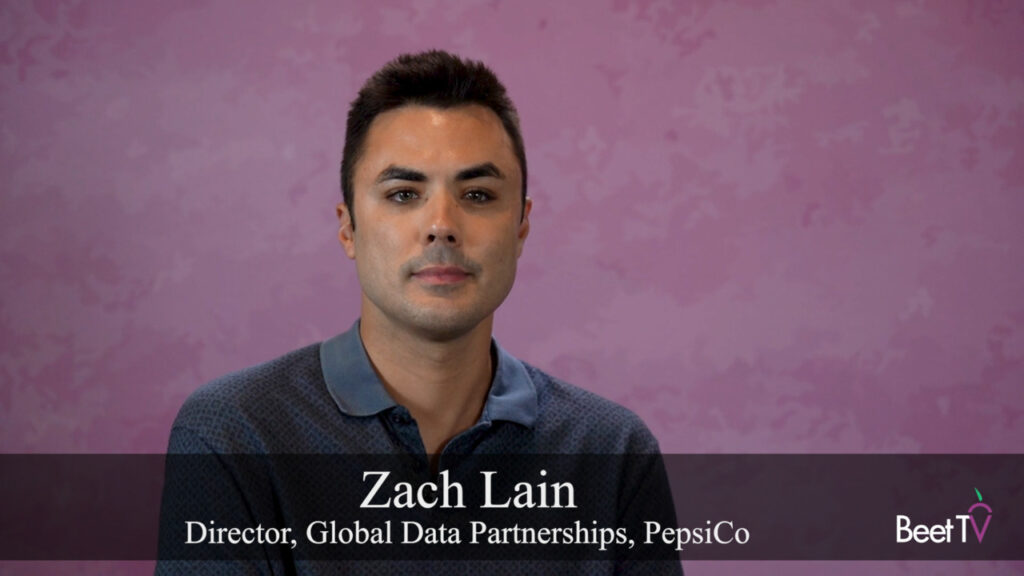SAN JUAN, Puerto Rico—With more long-tail video migrating to television distribution, vetting that content is a demanding process, according to Neil Smith of FreeWheel Markets. A bit easier but also required is being able to map the personnel structure of major agency holding companies to figure out whom the company needs to work with.
While FreeWheel’s focus has always been on premium video from a variety of publishers, “There’s now a very low threshold for launching a app that will get TV distribution, so there is a big part of the industry now that is long-tail digital video but actually on a TV,” says Smith, who is GM of FreeWheel Markets.
“We spend a lot of time and energy when we’re evaluating who we want to work with to make sure that publishers that we don’t know well go through a pretty exhaustive process,” he adds in this interview at the recent Beet Retreat 2018. Interviewing Smith for Beet.TV is Matt Prohaska.
Among the items on the inspection checklist are validating traffic and the right to sell inventory to brand safety concerns. “We’ve created a quality threshold that we use for anything that we package up and bring to market. We spend a lot of time educating brands and agencies about that.”
While it’s nothing new to FreeWheel, it’s not a shared regimen.
“We are fortunately enough that we can be fully transparent with what runs in our ecosystem because we have such a focus on quality,” Smith says. “But not everyone in the ecosystem understands that, and if marketers are looking for scale, it’s sometimes easy to trade off scale for lesser quality-inventory.”
Asked whether it’s getting any easier to work with all of the various parties needed to plan and execute campaigns, he feels “we’re getting closer but it’s still very complex.”
Within the major holding companies “it varies pretty significantly. So we invest a lot of time in mapping out those organizations and understanding who the key people are, regardless of title because those titles also kind of vary wildly across holding companies.
“But also ultimately connecting to the teams that work with the brands. Brands are driving the decision-making and the holding companies are trying to serve their needs,” Smith says.
Then there are what he terms “mid-market” agencies that never scaled to the extent of the biggest industry players and whose teams are thus more unified. “The value proposition to those organizations and the level of friction is much lower sometimes than going into the major holding companies. So in some sense we’ve had a lot of success, and I feel like some of those agencies are taking advantage of that unification of linear and digital in a way that the bigger ones are not yet. But I fully believe we’ll get there very quickly.”
Third Quarter Video Stats
Subsequent to this interview, FreeWheel released its Q3 Video Monetization Report. Here are some key findings:
U.S.: Top line ad view growth of 26% year-over-year, fueled in part by 87% ad view growth on IP-enabled MVPD platforms.
U.S.: While the ratio of traditional MVPDs ad views to virtual MVPD ad views on IP-enabled platforms is 80:20, vMVPDs are growing almost twice as fast.
U.S.: OTT devices and smartphones combined now make up 60% of total ad views.
E.U.: There was top-line ad view growth of 16% despite U.S. publisher ad views in Europe declining 21% in light of a cautious approach to the GDPR.
This video was produced in San Juan, Puerto Rico at the Beet.TV executive retreat. Please find more videos from the series on this page. The Beet Retreat was presented by NCC along with Amobee, Dish Media, Oath and Google.







